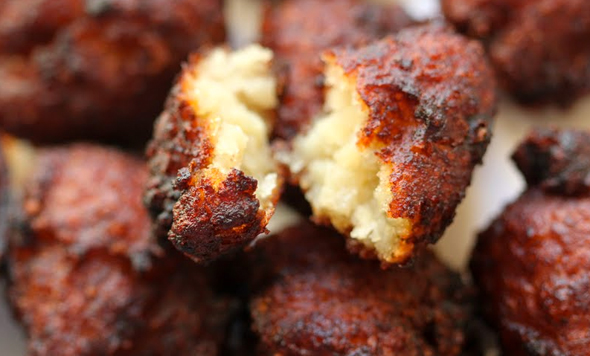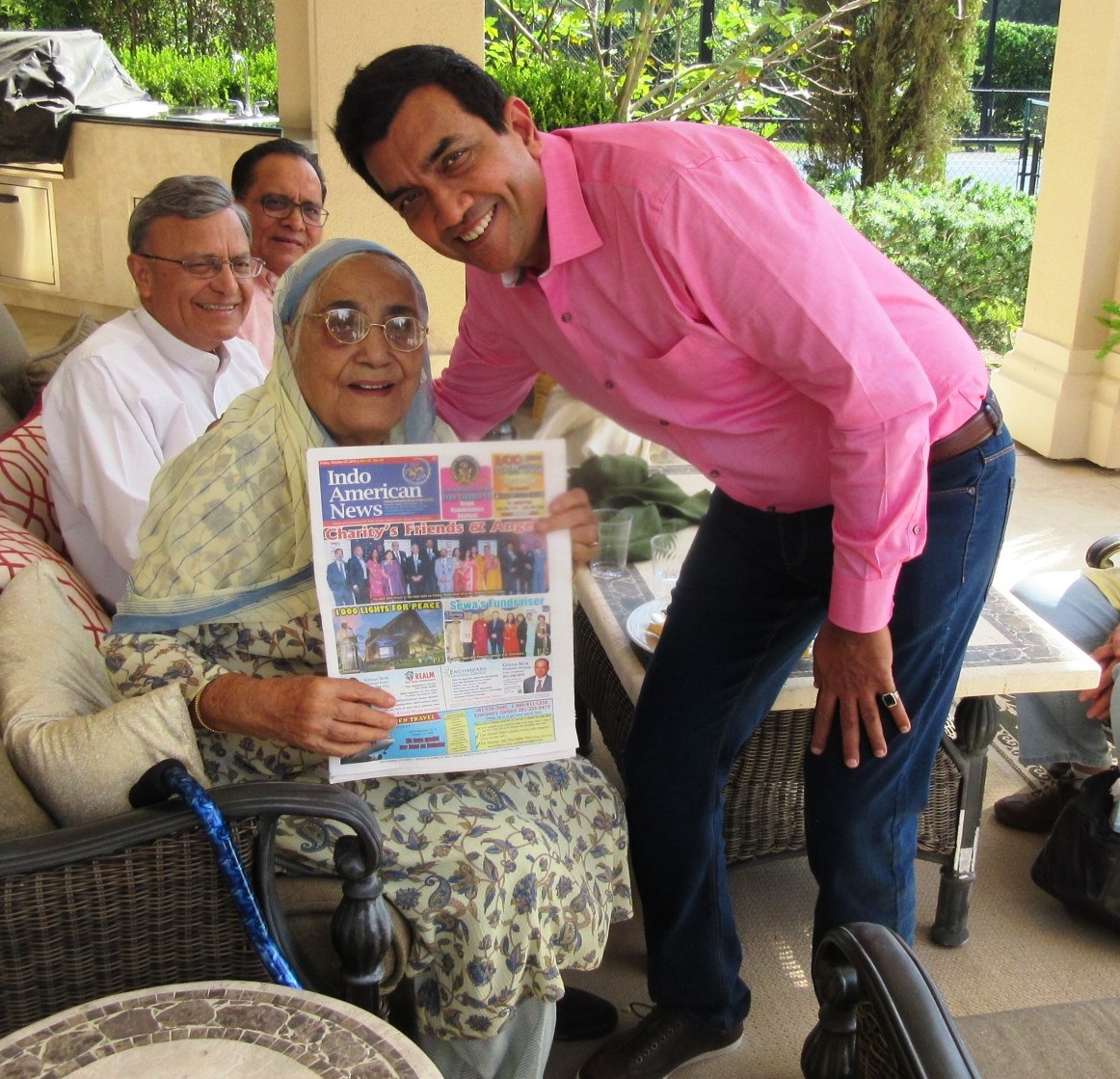Mama’s Punjabi Recipes: Kathal De Pakore (Fried Jackfruit Fritters)
You can find kathal most of the year in Delhi. It is popular because It is starchy and fibrous and people call it the “vegetarian’s meat” because of its texture once it is cooked in a curry. To make this dish, you need green kathal, otherwise when they ripen they become very sweet and are eaten as a fruit. The aroma of the inside of the fruit is a combination of an apple, pineapple, mango and banana. I remember when a relative of mine, Geeta, brought some green kathal from Dehradun and then forgot them in the car for four days only to find them soft and intensely sweet.
The kathal or jackfruit tree is native to South and Southeast Asia and may have originated in the rain forests of the Western Ghats of India and also West Bengal. When the Portuguese arrived in Calicut on the Malabar Coast in 1498, they saw this fruit which is called chakka in Malayalee. Instead, they called the fruit jaca, which is Portugese for Jackfruit.
This prickly thick-skinned fruit is the largest tree-borne fruit, and can reach 35 in in length, 20 in in diameter and weigh upto 80 lbs. Each tree can produce between 100 to 200 fruits a year. Jackfruit is the national fruit of Bangladesh, and kathal is a Bengali word. The pulp of the jackfruit is 74% water, 23% carbohydrates, 2% protein and 1% fat. It is a rich source of vitamin B6 and has moderates amounts of vitamin C and potassium.
Though it can be cooked sautéed or in a curry, kathal are also popular as pakoras (fried fritters) which can become a full meal, rolling them up in a roti, and eating it with a little chutney. Just dip into a spicy besan (chickpea) flour batter, deep fry and eat the pakoras hot from the frying pan in order to best appreciate them.
Ingredients:
1.5 cups besan (chickpea flour)
Water – enough to make a running paste
1 kg kathal (jackfruit) – green, not ripe
2 cups tael (vegetable oil) for deep frying
½ tsp ajwain (carom seeds)
Spices to taste: namak (salt), mirch (red pepper)
Directions:
1. Peel the thick skin to the inside, then cut the kathal length wise, about 1 inch long and about 1/2 inch thick slices and wash the pieces in running water.
2. Place the kathal pieces in a bowl and sprinkle with namak and mirch and let them stay for an hour to marinate the vegetable and soften the insides.
3. In a bowl, pour 1.5 cups of besan, mix in ajwain, namak and mirch and then while slowly pouring in water, beat the mixture till it becomes a soft, running paste.
4. Heat the oil in a karai (wok). Throw in a small dab of batter to make sure the oil is very hot. Take a slice of kathal, dip it into the batter then release it into the hot oil. Keep doing this till the surface of the oil is covered with battered pieces.
5. When one side is slightly brown, turn it over using a sieved spatula and turn over a few times to make sure both sides are cooked. Be careful that they do not become dark brown. Take them out and place on a paper towel to absorb the extra oil.
6. Serve hot with some tomato ketchup or mint or tamarind chutney.
TRADITIONAL COOK MAMA MEETS TV CHEF SANJEEV KAPOOR
During his visit to Houston as a spokesman for Akshaya Patra this past weekend for it’s fundraiser, popular Indian television chef and personality Sanjeev Kapoor held a cooking demonstration on Sunday at a private residence in Sugar Land for a select group of people. Among those invited was Mama, who is a big fan of Kapoor’s and watches his program whenever she can.
During the demonstration, Mama offered to roll out some dough for a dish Kapoor was making. Later over lunch, the two conversed for a while in Punjabi, and the affable Kapoor was delighted to learn of Mama’s weekly Punjabi recipe column, saying there was nothing better than homemade food. The two posed together with the latest issue of Indo-American News.

Shakuntla Malhotra is a skilled cook of Punjabi dishes made in the old-fashioned style that she learnt as a young woman in her ancestral home in Lyallpur (since renamed Faisalabad), India before it became part of Pakistan after the Partition in 1947. People have often admired her cooking for its simplicity and taste that comes with each mouthful. Even in her mid-eighties, she continues to cook daily and agreed to share some of her delectable Punjabi recipes.


